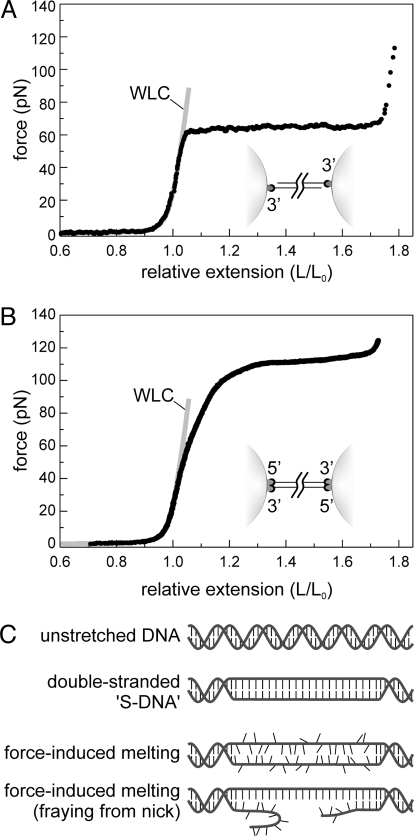Fig. 1.
The OS transition of dsDNA under tension. (A) Typical force-extension curve of a 3′-3′ attached DNA, with free 5′ ends (schematically represented in the inset). The elastic properties of DNA below the OS force of 65 pN are well described by the extensible worm-like chain model (WLC, gray line). At 65 pN, the DNA molecule undergoes the OS transition, during which the intrinsic contour length of the DNA increases from 100% to about 170%. (B) In a 3′5′-5′3′ attachment geometry, where all four strand ends are linked to the microspheres (schematically represented in the inset), the OS force raises to 110 pN. The elastic properties of this DNA construct is well described by the extensible worm-like chain model (WLC, gray line) up to forces of 60 pN. (C) Schematic representation of two models explaining the nature of the OS transition. In the first model, the transition is a result of gradual cooperative unwinding of the DNA double helix resulting in a base-paired structure, “S-DNA,” resembling a parallel ladder. In the second model, force-induced melting of the two strands causes the transition.

